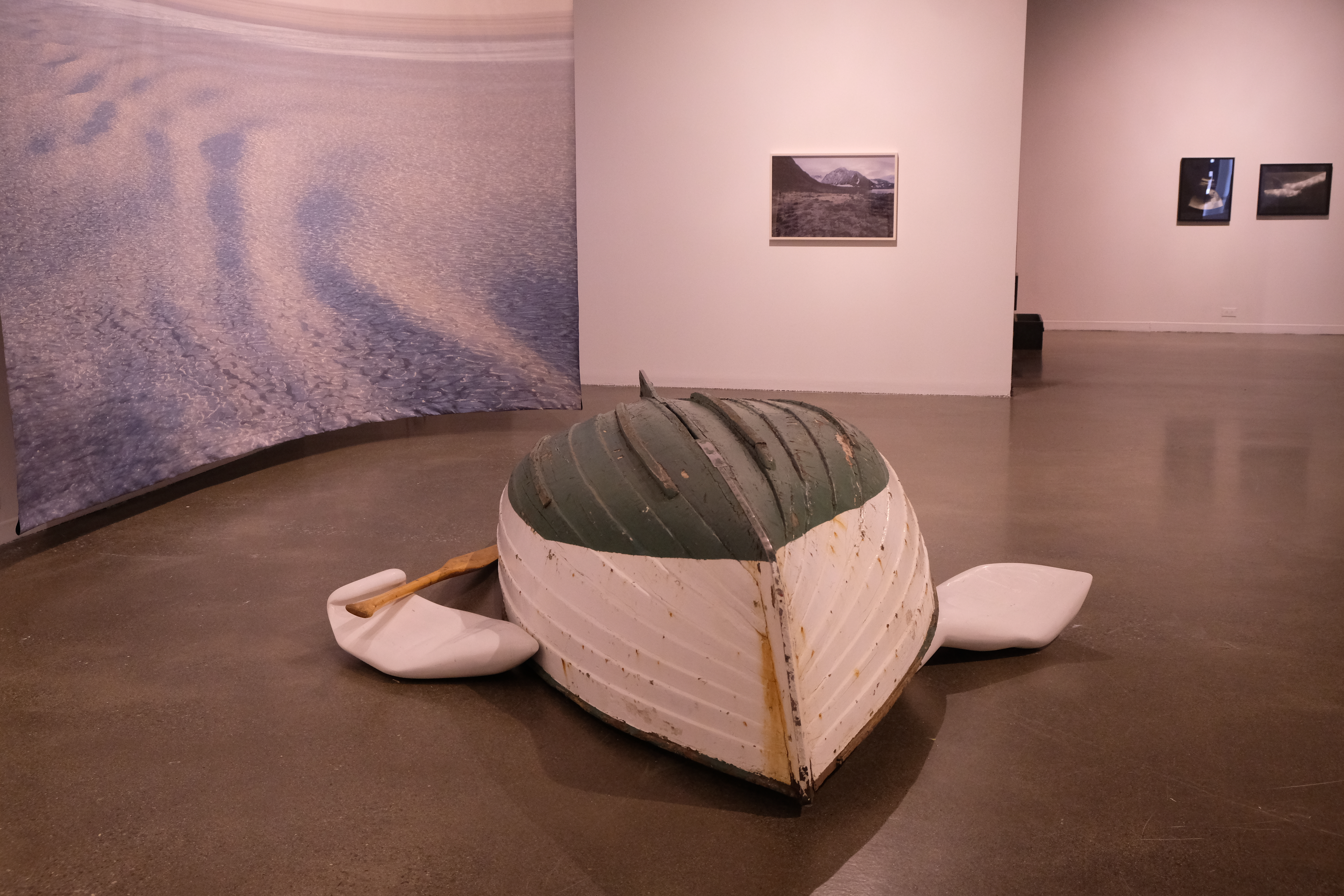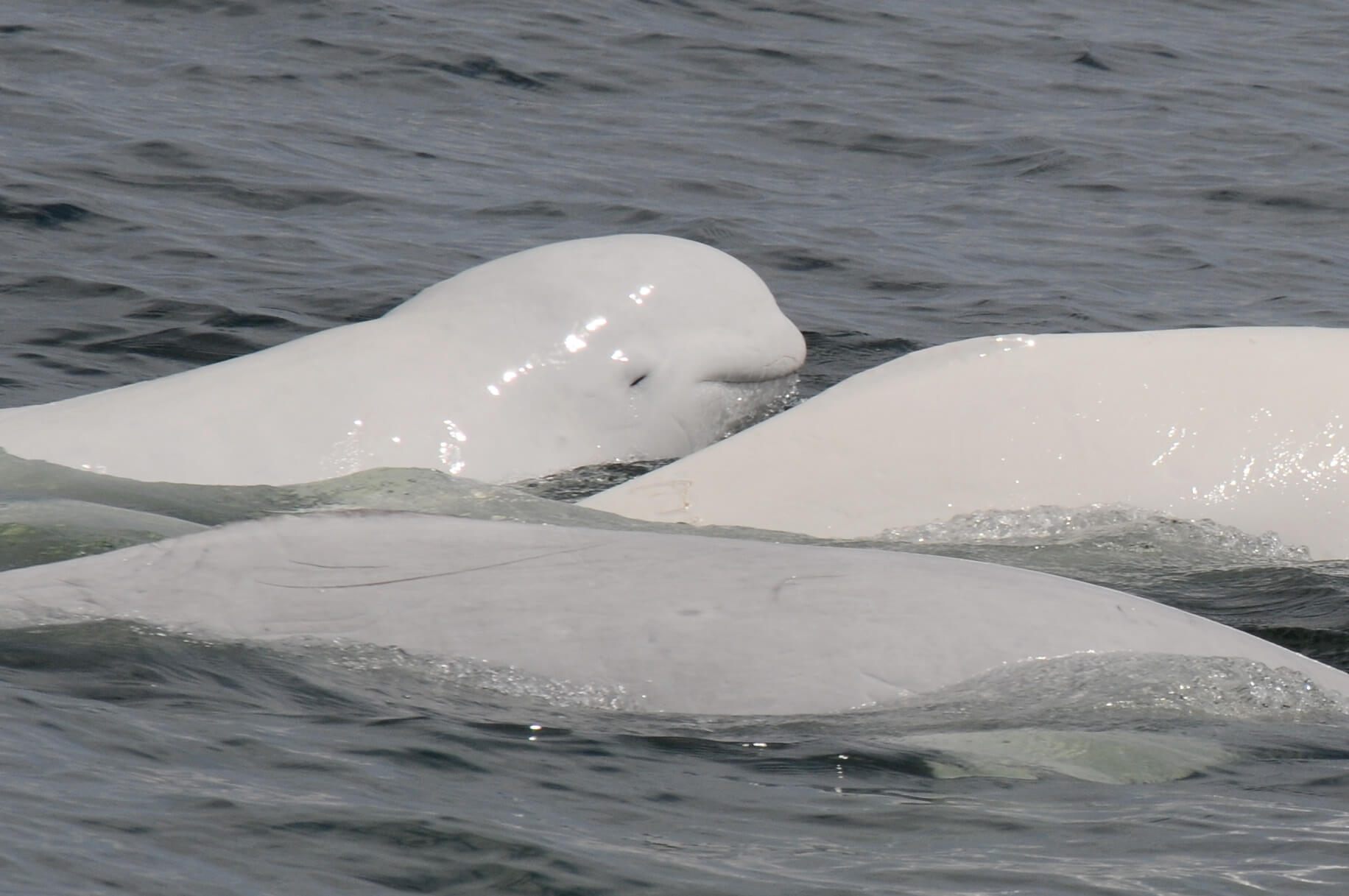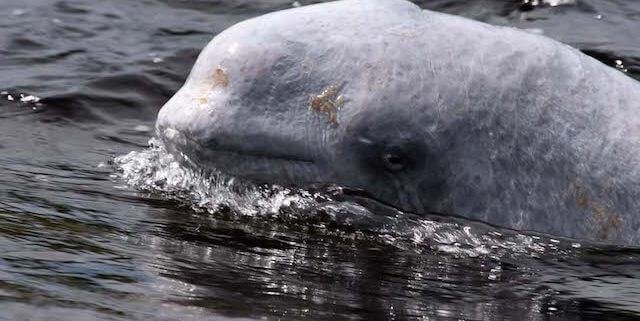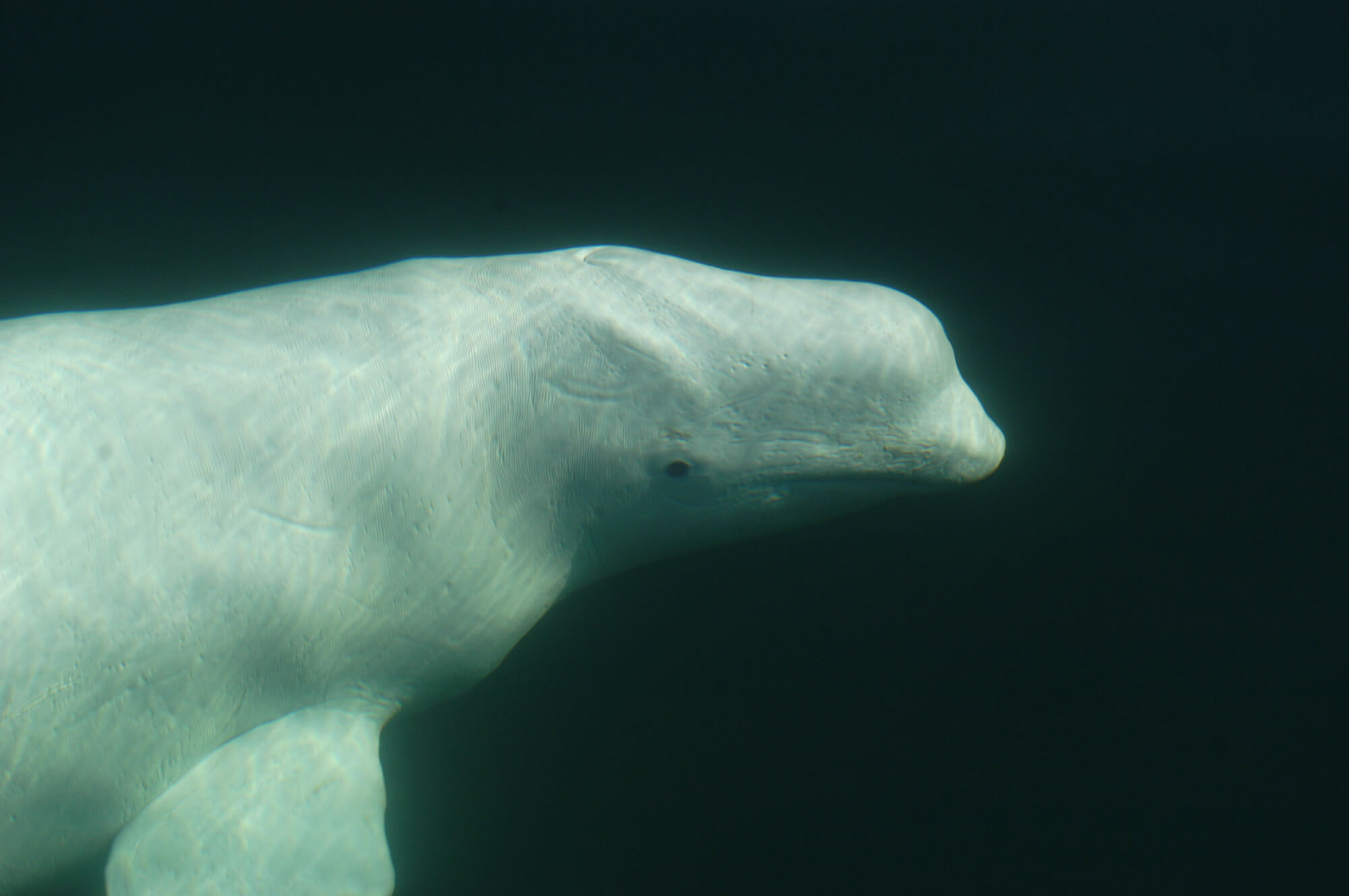In a context where environmental concerns are at the center of discussions, it seems difficult to navigate through the different emotions that inhabit us. What are our resources for mourning the loss of the environment, and for keeping hope alive? To address the situation of the St. Lawrence beluga whale, artist Maryse Goudreau has been creating a work-archive since 2012, with the endangered species at its heart.
Between grief and hope
Maryse Goudreau has been fascinated by whales since childhood. Since then, she has also become aware that cetaceans are experiencing all kinds of issues that threaten their survival. Under normal circumstances, the St. Lawrence beluga population should have doubled in the last 30 years. Instead, it has stagnated. Several other species are also on the brink of extinction, including blue whales, fin whales and right whales. Climate change is unlikely to slow this process. Fortunately, the artist is also witness to many conservation success stories, because there are some! Many people are concerned about the well-being of whales, and work every day to improve their situation.
The artist’s various works deal with ecological mourning and hope. Eco-anxiety, eco-grief and solastalgia are rational feelings related to the loss of the environment. These terms, neologisms associated with the climate crisis, more specifically represent all the physical and psychic suffering experienced in the face of the negative consequences of climate and environmental change. These concepts are directly linked to identity and our ties with the environment. According to place attachment theory, our experiences are anchored in our environment, and we develop an attachment to it. When we see a place in a degraded state, we can feel anxiety or a form of mourning, precisely because it is part of our lives, part of our identity. While the field of conservation takes a more scientific look at endangered species, the arts could be an interesting medium for bringing emotions into the conversation.
Les baleines et les arts
In her archival artwork Maryse Goudreau explores different artistic media such as photography, video, sculpture, objects and atmospheres. All in the hope of awakening people to the importance of living things by mobilizing their senses and emotions. She believes that sowing wonder, empathy and even sadness in the public is an interesting way of raising environmental awareness. Her work is an attempt to pinpoint the different feelings we all have about the beluga’s slow demise.
Her latest exhibition, Dans l’œil du béluga, invites people to change their perspective and see the world as it would be perceived by a beluga. The immersive work also recounts an event that particularly marked her during one of her mandates as a volunteer with RQUMM (Réseau québécois d’urgences mammifères marins): the rescue of Népi, a beluga whale that had become stuck in the Népisiguit River in 2017. After several days of watching over him until he was moved to the St. Lawrence River, Maryse came to understand Népi better, and now she’s trying to pass on this connection.
Are emotions part of the solution?
So, how can we keep hope alive and live with these difficult feelings? Weaving links with the environment and trying to take action to counter its loss would be avenues to explore. The solution could lie in the arts, as Maryse did with the belugas.
Here, art would have several functions. The beluga environment is a place to which we have no access. Art then becomes a space where we can represent it, or even interact with it, and create links. We enter into a relationship with the animal, better understanding its value, its importance and its difficulties. The exhibition does not present a discourse on the beluga, but rather a constructed experience with the animal. We let it speak for itself…








